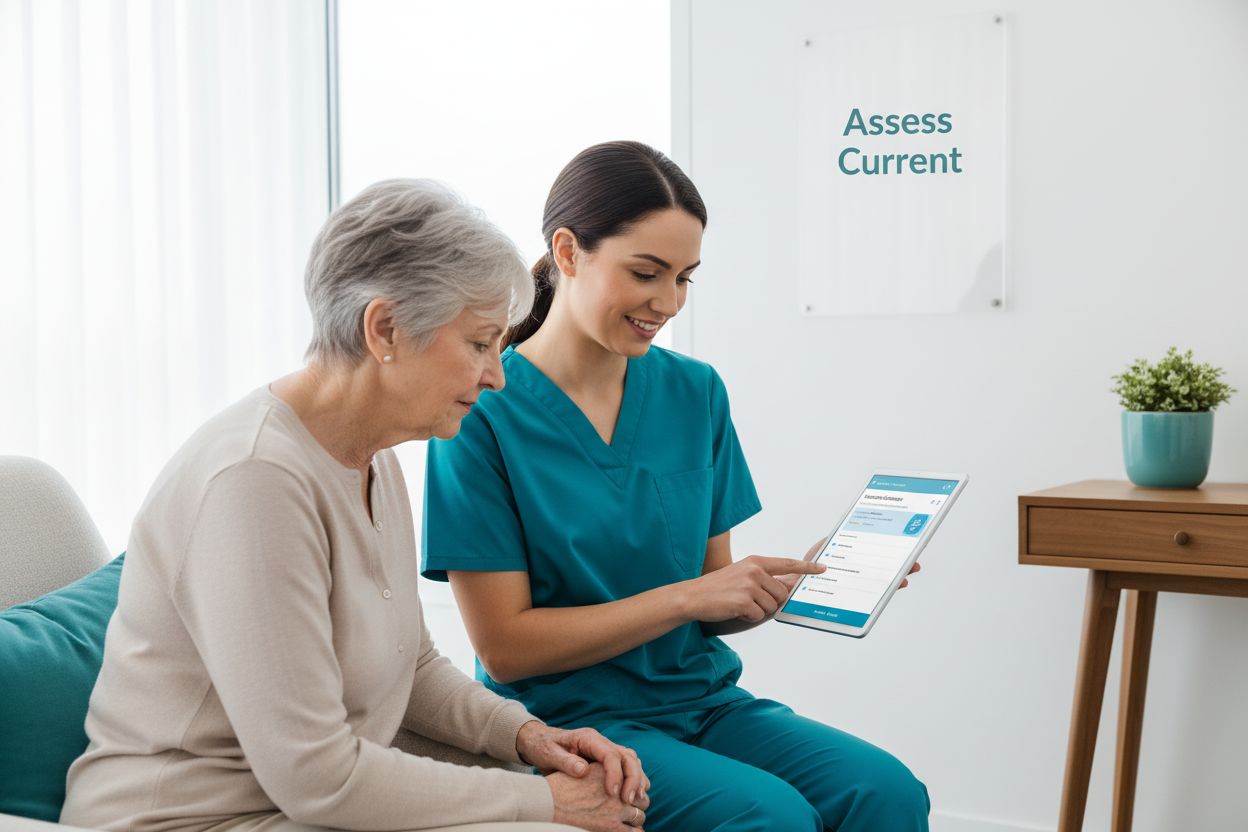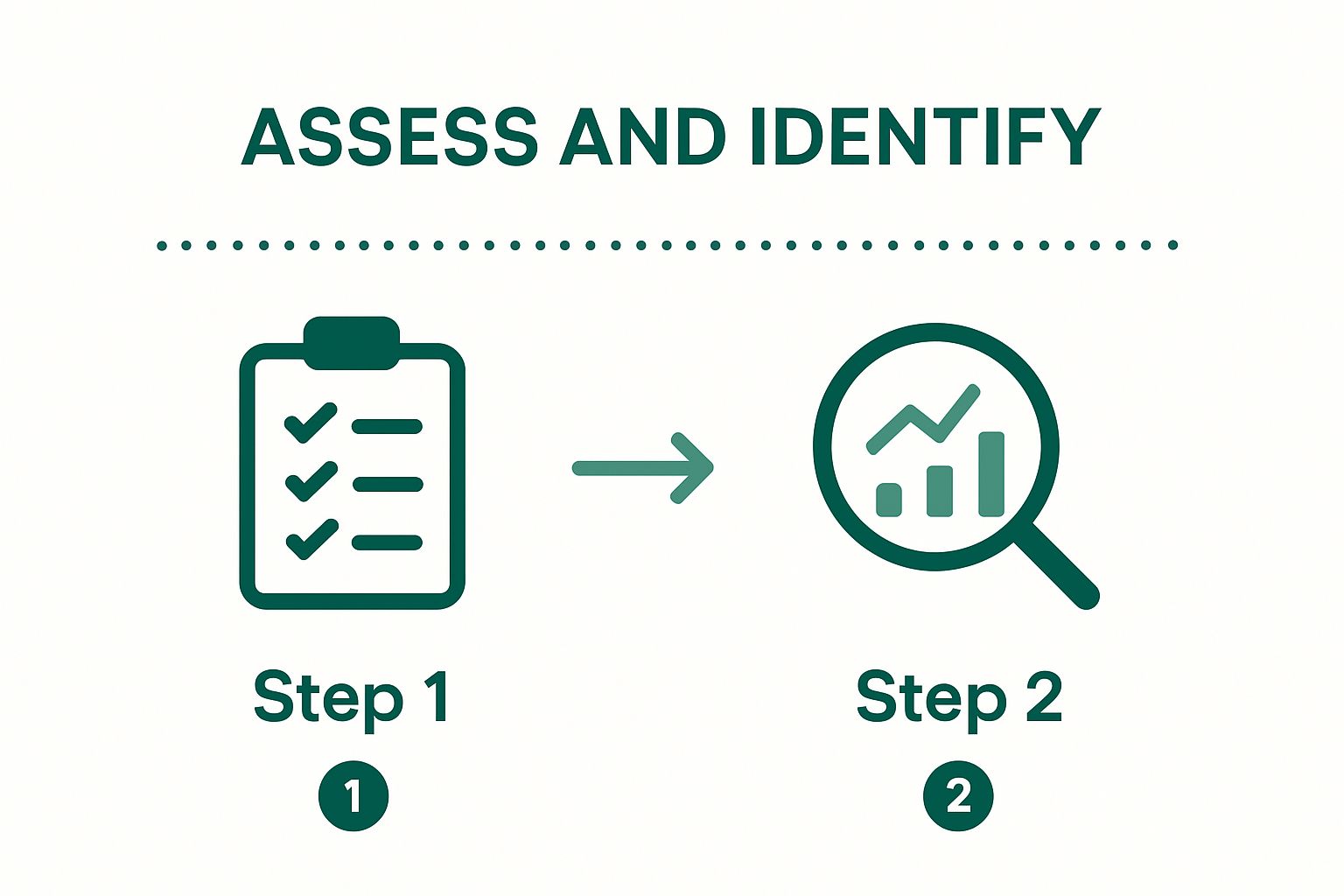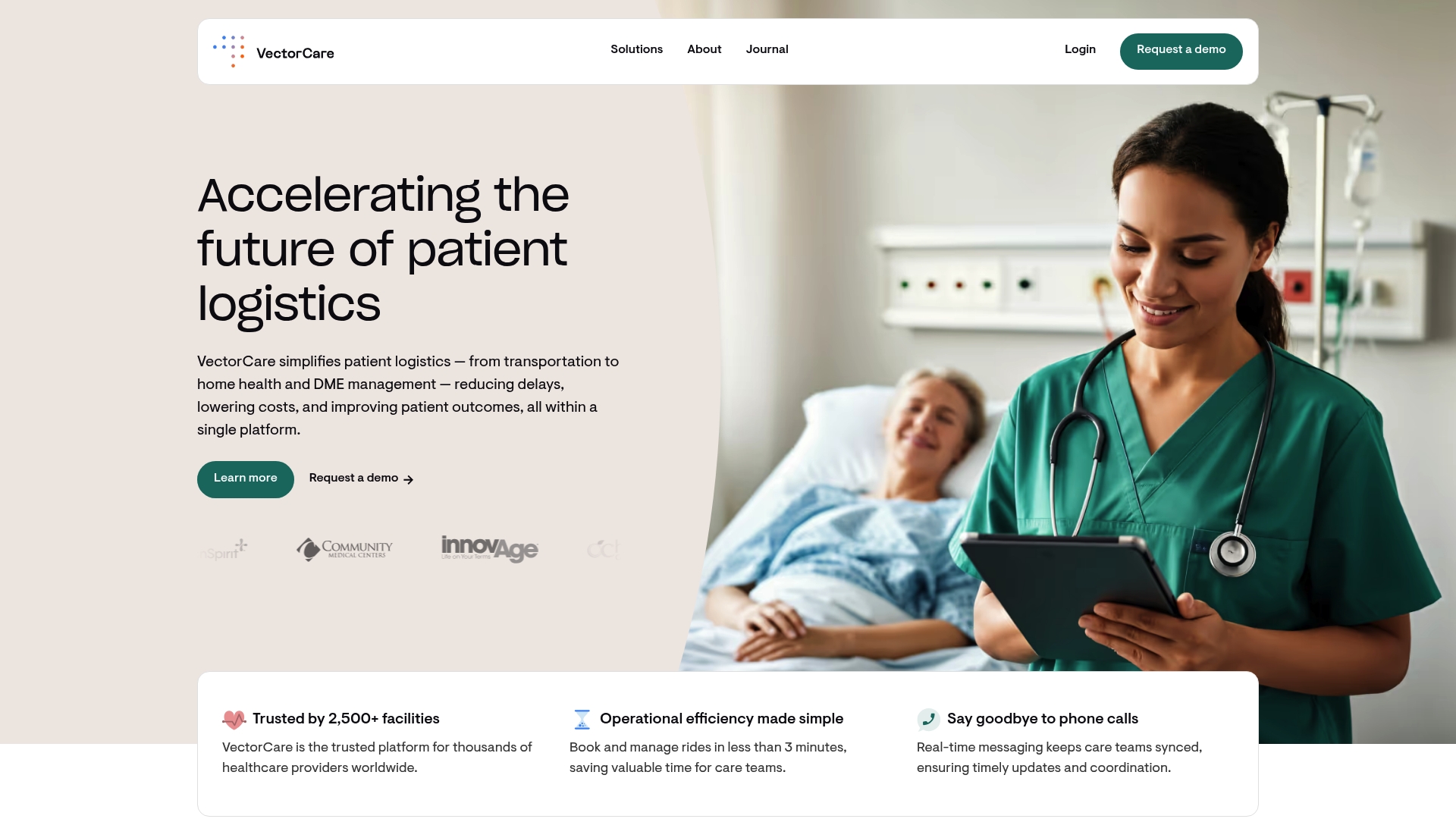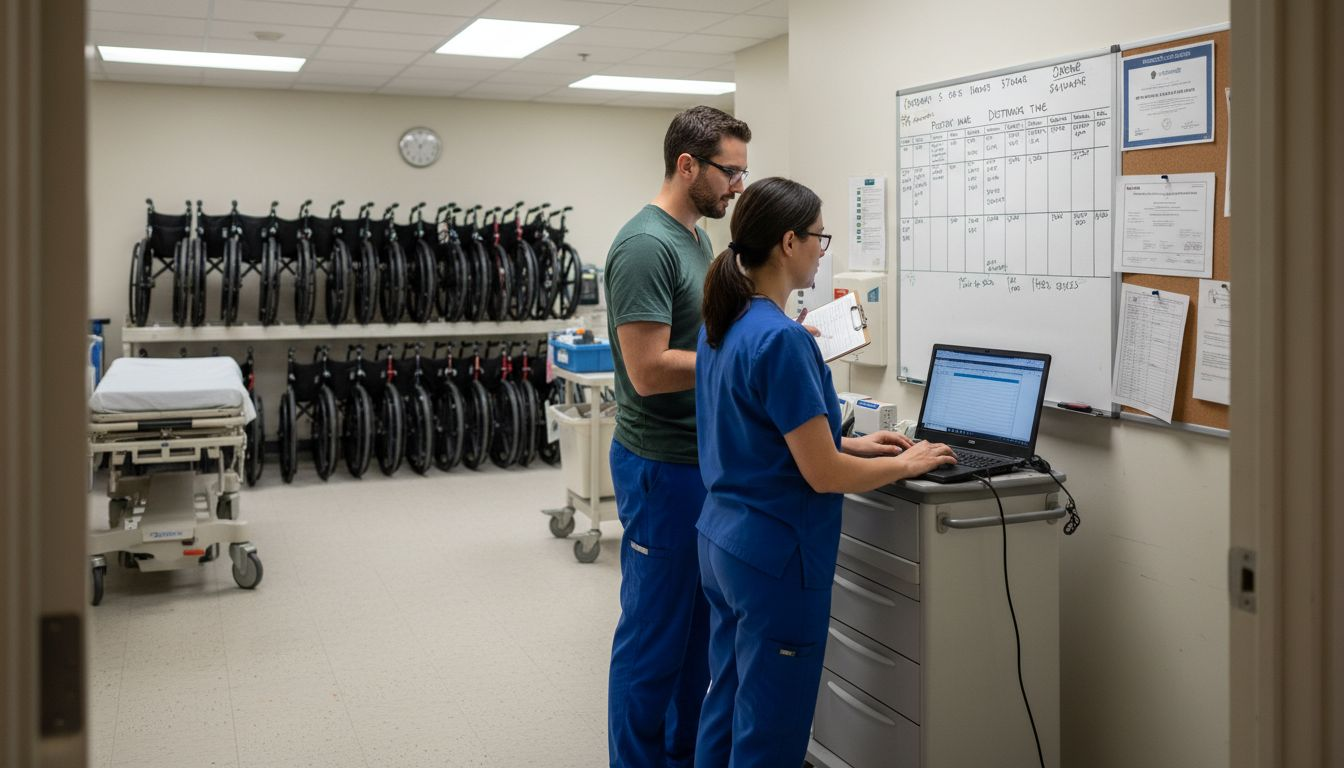Strategies to Improve Patient Satisfaction in Healthcare

Patient satisfaction is the heartbeat of any modern healthcare system. Surprisingly, while hospitals have deployed everything from digital kiosks to advanced analytics, 92 percent of patients say communication remains their top concern. The real shock comes when you realize that gathering mountains of data is only the starting point and true improvement depends on what you do with it next.
Table of Contents
- Step 1: Assess Current Patient Satisfaction Levels
- Step 2: Identify Key Areas for Improvement
- Step 3: Implement Patient-Centered Communication Strategies
- Step 4: Optimize Service Delivery Processes
- Step 5: Train Staff on Best Practices
- Step 6: Measure and Evaluate Patient Feedback
Quick Summary
| Key Point | Explanation |
|---|---|
| 1. Comprehensive Patient Feedback Collection | Utilize multiple methods such as surveys and digital platforms to gather diverse patient insights. |
| 2. Analyze Feedback for Improvement Areas | Systematically segment and evaluate feedback to identify critical issues affecting patient satisfaction. |
| 3. Implement Patient-Centered Communication | Develop communication strategies that prioritize empathy and clarity across all patient interactions. |
| 4. Optimize Service Delivery Processes | Streamline patient flow and reduce bottlenecks by redesigning processes and integrating technology. |
| 5. Invest in Continuous Staff Training | Offer comprehensive training programs to equip staff with essential communication and empathy skills. |
Step 1: Assess Current Patient Satisfaction Levels
Improving patient satisfaction begins with a comprehensive understanding of your current performance. This critical first step involves gathering precise data about how patients perceive their healthcare experiences. By systematically evaluating existing satisfaction metrics, healthcare organizations can identify specific areas requiring targeted improvement.
Comprehensive Data Collection Methods
Successful assessment requires a multifaceted approach to collecting patient feedback. Organizations should leverage multiple channels to capture a holistic view of patient experiences. Read more about patient experience strategies to enhance your data gathering techniques.
Traditional survey methods remain powerful tools for understanding patient perspectives. Implement standardized patient satisfaction surveys immediately after medical services, focusing on critical interaction points such as communication, wait times, staff responsiveness, and overall care quality. These surveys should include both quantitative rating scales and open-ended questions that allow patients to provide detailed narratives about their experiences.
Beyond formal surveys, consider integrating real-time feedback mechanisms. Digital platforms, mobile applications, and in-facility kiosks can provide immediate insights into patient sentiments. Electronic feedback systems enable rapid data collection and allow patients to share their experiences while the interactions are still fresh in their minds.
Analyzing collected data requires a systematic approach. Look for recurring themes, identify statistically significant patterns, and segment feedback by different variables like department, service type, patient demographics, and care pathway. Advanced healthcare analytics tools can help transform raw feedback into actionable insights, revealing precise improvement opportunities.
Quality assessment isn’t just about collecting data—it’s about creating a continuous improvement framework. Establish regular review cycles where leadership teams thoroughly examine satisfaction metrics, discuss findings, and develop targeted intervention strategies. This approach transforms patient feedback from a passive collection process into an active mechanism for organizational enhancement.
Key Verification Criteria
- Comprehensive survey coverage across all patient interaction points
- Multiple feedback collection channels
- Systematic data analysis process
- Regular leadership review and strategy development
By meticulously assessing current patient satisfaction levels, healthcare organizations lay a robust foundation for meaningful, patient-centered improvements.

Step 2: Identify Key Areas for Improvement
After collecting comprehensive patient satisfaction data, the next critical step is pinpointing specific areas requiring strategic intervention. This process transforms raw feedback into actionable insights that can meaningfully enhance patient experiences across healthcare settings.
Careful analysis begins by examining patient feedback through multiple lenses. According to research on patient experience management, systematic evaluation of complaints and suggestions reveals nuanced improvement opportunities. Healthcare organizations should develop a structured approach to categorizing feedback, creating a comprehensive map of potential enhancement zones.
Systematic Feedback Analysis
Start by segmenting patient feedback into distinct categories such as communication quality, wait times, staff responsiveness, facility cleanliness, and clinical interaction effectiveness. Look for consistent patterns and recurring themes that emerge across different patient groups. This might include frequent mentions of long wait times, communication gaps, or inconsistent care coordination.
Utilize advanced data visualization and analytics tools to transform complex feedback into clear, actionable insights. Heat maps, trend analysis, and comparative reporting can help leadership teams quickly identify critical improvement areas. Pay special attention to feedback that indicates potential systemic issues rather than isolated incidents.
Engaging frontline staff becomes crucial during this identification phase. Nurses, administrative personnel, and clinical staff often have invaluable insights into patient experience challenges. Conduct focused group discussions and anonymous feedback sessions to uncover nuanced perspectives that might not be immediately apparent in formal survey data.
Critical Evaluation Criteria
- Comprehensive categorization of patient feedback
- Multiple data analysis perspectives
- Cross-departmental input and collaboration
- Clear identification of systemic improvement opportunities
Successful identification of improvement areas requires a holistic, data-driven approach that balances quantitative metrics with qualitative insights. By meticulously analyzing patient feedback, healthcare organizations can develop targeted strategies that address root causes of patient dissatisfaction and create meaningful, sustainable improvements in care delivery.
Step 3: Implement Patient-Centered Communication Strategies
Effective patient communication transcends simple information exchange—it represents the cornerstone of compassionate, high-quality healthcare delivery. This step focuses on transforming communication approaches to create meaningful, empathetic connections that enhance patient experiences and trust.
According to research on provider-patient interactions, communication strategies significantly impact patient satisfaction and health outcomes. Healthcare organizations must develop comprehensive communication frameworks that prioritize clarity, empathy, and accessibility. Learn more about advanced communication solutions to enhance your approach.
Comprehensive Communication Framework
Begin by establishing clear communication protocols across all patient interaction points. Training programs are essential for equipping healthcare staff with advanced communication skills that go beyond medical terminology. Focus on teaching active listening techniques, emotional intelligence, and patient-centric language that makes complex medical information understandable and less intimidating.
Technology plays a crucial role in modern patient communication strategies. Implement multichannel communication platforms that allow patients to interact through their preferred methods—whether that’s secure messaging portals, patient apps, telephone follow-ups, or in-person consultations. These platforms should provide consistent, accessible information while maintaining patient privacy and confidentiality.
Personalization becomes a key differentiator in patient communication. Develop communication approaches that consider individual patient preferences, cultural backgrounds, and unique medical needs. This might involve providing translation services, creating materials at appropriate literacy levels, or offering communication support for patients with disabilities.
Key Communication Implementation Criteria
- Comprehensive staff communication training
- Multichannel communication platforms
- Personalized communication approaches
- Continuous feedback and improvement mechanisms
Successful patient-centered communication requires ongoing evaluation and adaptation. Regularly collect feedback about communication experiences, analyze interaction data, and continuously refine strategies to meet evolving patient expectations and technological capabilities.
Step 4: Optimize Service Delivery Processes
Optimizing service delivery represents a critical transformation in enhancing patient satisfaction. This step focuses on systematically redesigning healthcare processes to create smoother, more efficient patient experiences that reduce frustration and improve overall care quality. Explore strategies for modernizing healthcare service delivery to gain deeper insights into this critical process.
Streamlining Patient Flow and Operational Efficiency
Workflow mapping becomes the foundation of service optimization. Healthcare organizations must meticulously analyze each patient touchpoint, identifying bottlenecks, redundancies, and potential friction points. This involves creating detailed process maps that track patient journeys from initial contact through post-treatment follow-up, examining every interaction with a critical eye toward efficiency and patient experience.
Technology plays a transformative role in service delivery optimization. Implement integrated digital platforms that enable seamless communication between different departments, reducing wait times and eliminating information gaps. Advanced scheduling systems can help manage patient flow more effectively, providing real-time updates and minimizing unnecessary waiting periods. Automated reminder systems and digital check-in processes can significantly reduce administrative overhead and improve patient convenience.
Staff training and empowerment are equally crucial in service delivery optimization. Develop comprehensive training programs that focus not just on technical skills, but on creating a patient-centric culture. This means equipping staff with the tools and autonomy to make quick decisions that improve patient experiences. Cross-training employees can create more flexible teams capable of addressing patient needs more comprehensively.
Continuous improvement requires establishing robust feedback mechanisms. Regularly collect and analyze data on service delivery performance, looking for opportunities to refine processes. This might involve implementing rapid improvement cycles that allow for quick adjustments based on patient and staff feedback.
Key Service Optimization Criteria
- Comprehensive workflow mapping
- Digital integration and automation
- Staff training and cultural transformation
- Continuous performance monitoring
Successful service delivery optimization requires a holistic approach that balances technological innovation, staff empowerment, and a relentless focus on patient experience. By systematically addressing inefficiencies and creating more responsive healthcare processes, organizations can significantly enhance patient satisfaction and overall care quality.
Step 5: Train Staff on Best Practices
Staff training represents the critical human element in transforming patient satisfaction. This step focuses on developing comprehensive training programs that equip healthcare professionals with the skills, knowledge, and emotional intelligence necessary to deliver exceptional patient experiences. Learn about emerging healthcare training trends to enhance your approach.
According to research on healthcare communication, training programs must go beyond technical skills to cultivate empathy, cultural competence, and patient-centered communication. Developing a holistic training framework becomes essential for creating meaningful patient interactions.
Comprehensive Training Strategy
Begin by conducting a thorough skills assessment of current staff, identifying specific areas where communication, technical expertise, and interpersonal skills can be enhanced. Design multilayered training programs that incorporate interactive workshops, simulation exercises, role-playing scenarios, and ongoing professional development opportunities. These programs should address not just medical protocols, but also emotional intelligence, cultural sensitivity, and advanced communication techniques.
Technology can significantly augment staff training efforts. Implement digital learning platforms that offer flexible, accessible training modules allowing staff to develop skills at their own pace. Virtual reality simulations can provide immersive experiences that help healthcare professionals practice challenging patient interactions in a controlled, supportive environment. These technologies enable staff to build confidence and refine their approach without real-world risk.
Create a culture of continuous learning by establishing mentorship programs, regular skills refresher courses, and peer feedback mechanisms. Encourage staff to share best practices and learn from each other’s experiences. Recognition and incentive programs can motivate staff to consistently improve their patient interaction skills and maintain high standards of care.
Key Staff Training Implementation Criteria
- Comprehensive skills assessment
- Multidimensional training approaches
- Technology-enhanced learning platforms
- Continuous improvement mechanisms
Successful staff training requires a commitment to ongoing development, creating an organizational culture that values patient-centered care, empathy, and continuous professional growth. By investing in staff capabilities, healthcare organizations can transform patient experiences and build lasting trust.

Step 6: Measure and Evaluate Patient Feedback
Measuring and evaluating patient feedback transforms raw data into actionable insights that drive continuous improvement in healthcare service delivery. This critical step provides a systematic approach to understanding patient experiences, identifying performance gaps, and developing targeted strategies for enhancement. Discover advanced patient satisfaction measurement techniques to refine your evaluation process.
According to healthcare quality assessment standards, standardized measurement tools provide a comprehensive framework for tracking patient satisfaction. Implementing a robust feedback evaluation system requires a multifaceted approach that goes beyond simple numerical ratings.
Comprehensive Feedback Analysis Framework
Develop a sophisticated measurement strategy that combines quantitative and qualitative feedback mechanisms. Utilize standardized surveys like HCAHPS alongside more nuanced collection methods such as focus groups, digital feedback platforms, and in-depth interviews. This approach allows for a more holistic understanding of patient experiences, capturing both statistical trends and personal narratives that numbers alone cannot reveal.
Advanced data analytics play a crucial role in transforming feedback into meaningful insights. Invest in sophisticated analytics platforms that can process complex datasets, identifying subtle patterns and correlations that might escape traditional analysis. These tools should enable segmentation of feedback by various demographics, service lines, and interaction points, providing granular insights into specific areas of performance.
Establish a transparent reporting mechanism that shares feedback results across the entire organization. Create regular review sessions where leadership and frontline staff collaboratively examine patient feedback, discuss potential improvements, and develop targeted intervention strategies. This approach ensures that feedback becomes a catalyst for continuous organizational learning and improvement.
Below is a checklist table summarizing the key criteria for successful patient feedback measurement and evaluation, helping organizations ensure all essential elements are addressed.
| Evaluation Criteria | Description |
|---|---|
| Multi-method feedback collection | Use standardized surveys, focus groups, digital platforms, and interviews |
| Advanced data analytics | Implement sophisticated tools to process and analyze complex datasets |
| Organizational transparency | Share feedback results across all levels for informed decisions |
| Collaborative review sessions | Hold regular meetings with leadership and frontline staff to discuss insights |
| Actionable insight generation | Identify clear steps for targeted improvement and continuous learning |
Key Feedback Evaluation Criteria
- Comprehensive multi-method feedback collection
- Advanced data analytics capabilities
- Organizational transparency and collaborative review
- Actionable insight generation
Successful patient feedback measurement requires a commitment to continuous improvement, transforming each piece of feedback into an opportunity for enhanced patient care and organizational growth.
Transform Patient Satisfaction with Smarter Healthcare Logistics
You have read how vital it is to streamline communication, reduce wait times, and eliminate inefficiencies to boost patient satisfaction in your organization. Traditional approaches only get you so far. If you recognize how gaps in process optimization, delayed transportation, or manual coordination erode trust and patient experience, you are not alone. The pressure to deliver seamless, patient-centered care grows every day.

Step into a future where logistics support your satisfaction goals. Discover how VectorCare’s digital platform automates scheduling, provides real-time patient journey updates, and ensures every stakeholder is connected. By integrating logistics tools that align with the strategies addressed in the article, you reduce errors, speed up care delivery, and gain actionable insights. Do not let outdated systems hold your team back. Visit VectorCare now to request a demo or explore how smarter coordination can immediately raise your patient satisfaction scores.
Frequently Asked Questions
How can healthcare organizations assess current patient satisfaction levels?
To assess current patient satisfaction levels, organizations should implement standardized surveys immediately after medical services. Focus on critical interaction points such as communication and wait times to gather actionable feedback.
What are effective methods for collecting patient feedback?
Effective methods for collecting patient feedback include traditional surveys, real-time digital feedback systems, and in-facility kiosks. Utilize multiple channels to capture diverse patient experiences and insights that are relevant while interactions are still fresh.
How can we identify key areas for improvement in patient satisfaction?
To identify key areas for improvement, categorize patient feedback into distinct categories like communication quality and wait times. Analyze this data to find recurring themes and systemic issues to ensure targeted enhancements.
What communication strategies can enhance patient satisfaction?
Implement comprehensive communication frameworks that prioritize clarity and empathy in patient interactions. Train staff in active listening and use technology to enable multichannel communication options that cater to patient preferences.
How can healthcare service delivery processes be optimized?
Healthcare service delivery processes can be optimized through workflow mapping to identify bottlenecks. Focus on integrating digital platforms that streamline communication between departments, aiming to reduce wait times by 20% within the next quarter.
What should a staff training program include to improve patient experiences?
A staff training program should incorporate emotional intelligence and cultural competence, alongside technical skills. Use interactive training methods such as workshops and simulations to ensure staff feel confident in delivering patient-centered care.



